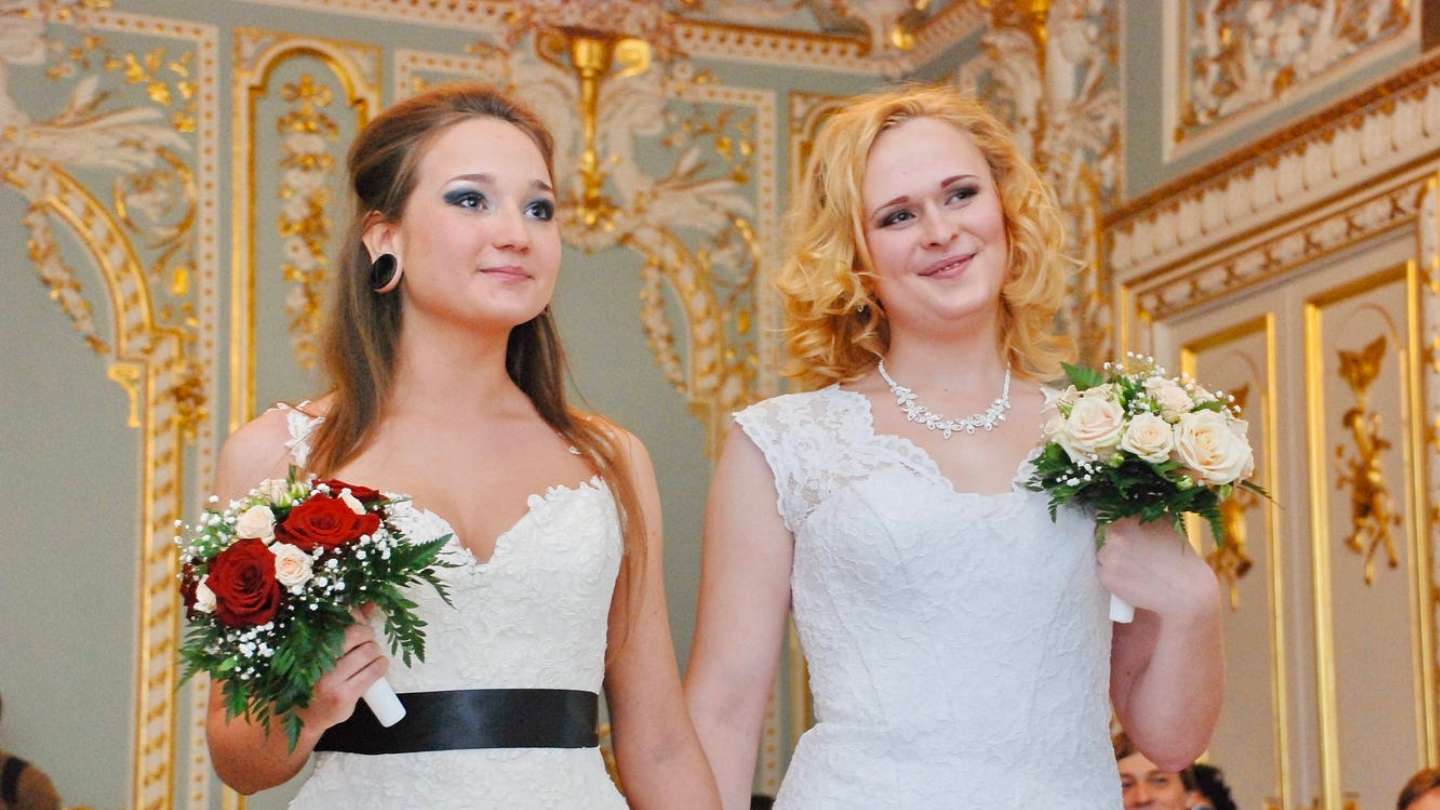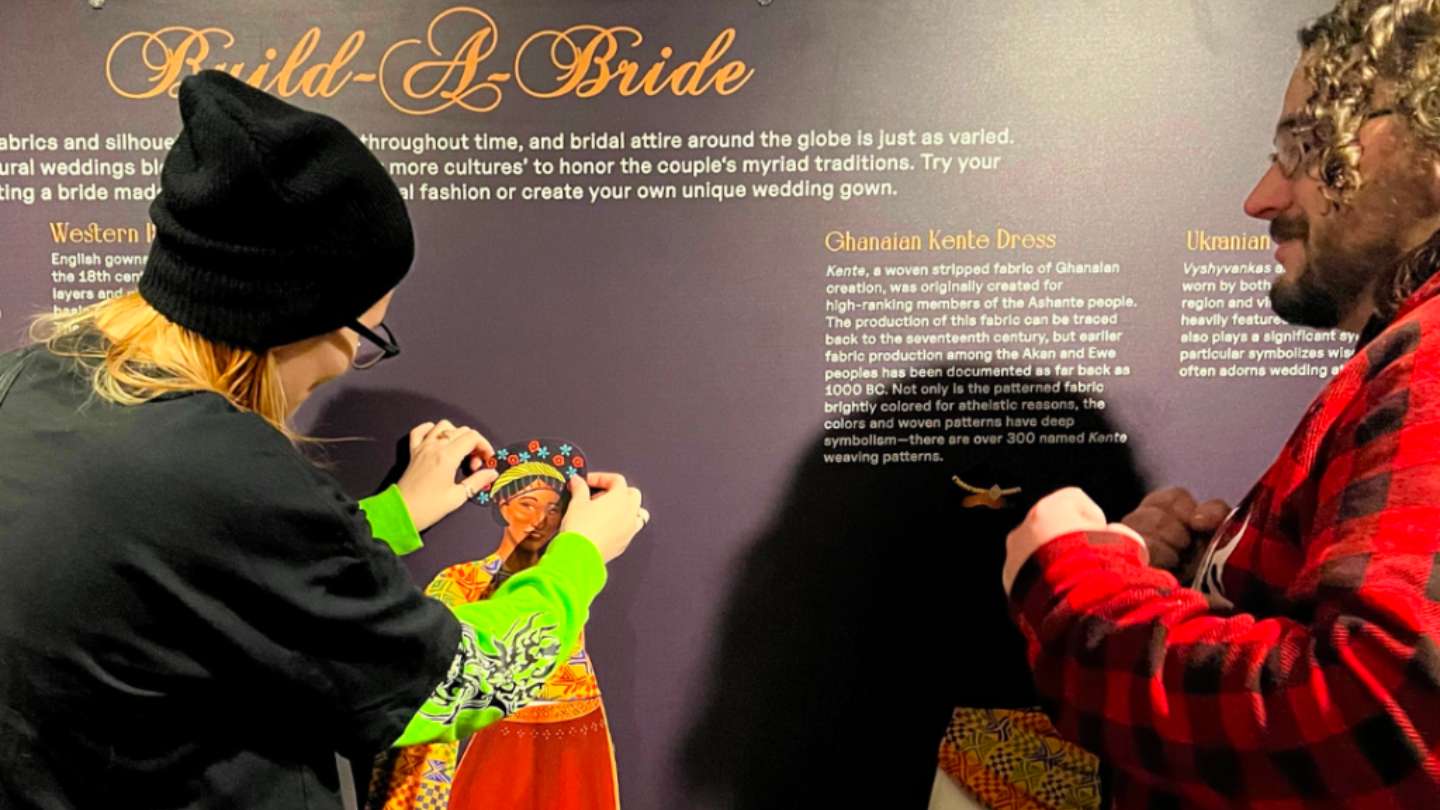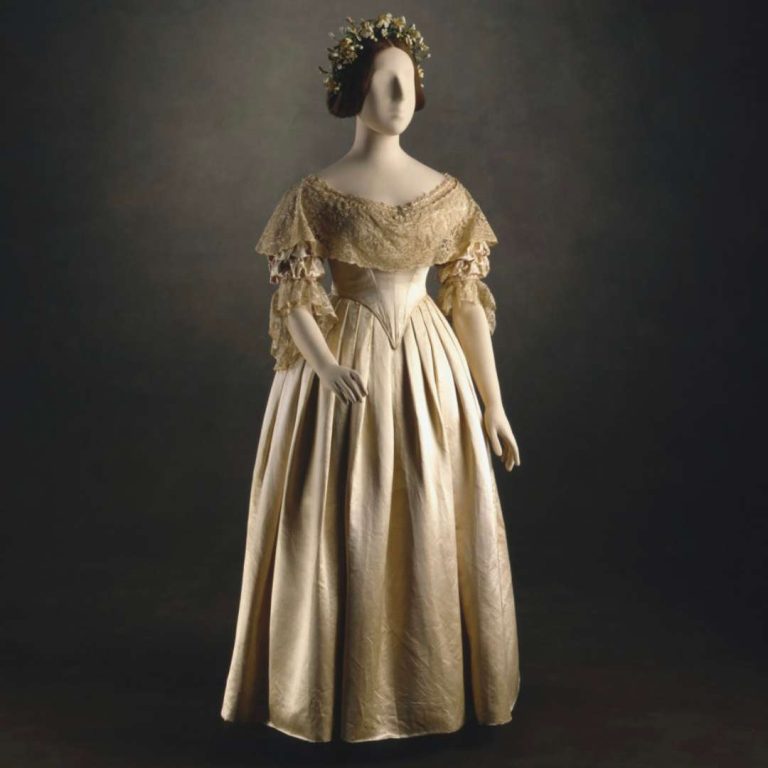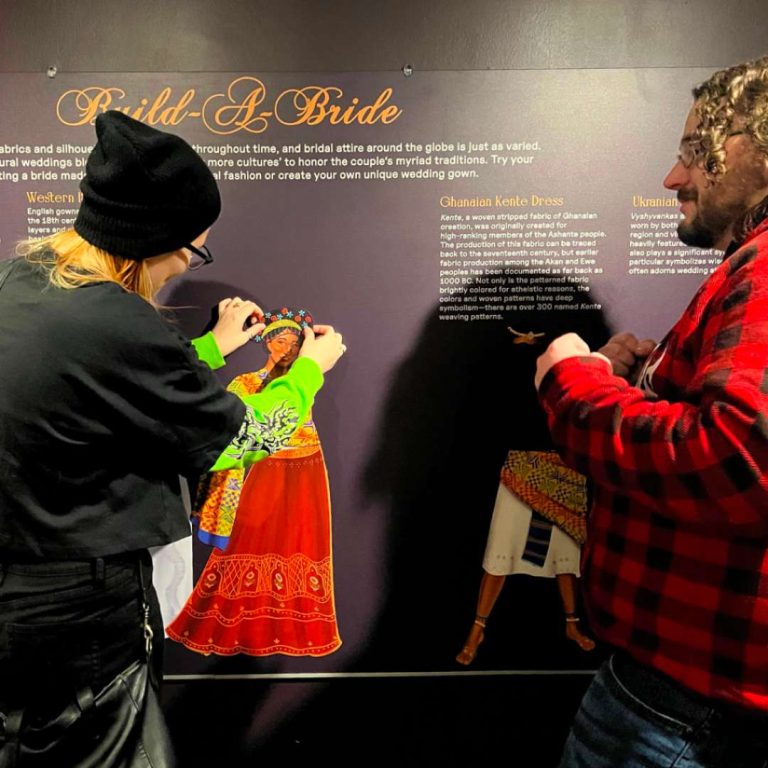For centuries, people in the gay community were unable to legally marry their chosen same-sex partners. Connecticut set a precedent by becoming one of the first of the American states to legalize gay marriage in 2008, but the fight for marriage equality in the United States continued. In 2015, the U.S. Supreme Court recognized same-sex marriage as a matter of law. The result was a boom in formal marriage ceremonies among the Lesbian, Gay, Bisexual, Transgender and Queer (LGBTQ+) community.
Choosing Their Own Path
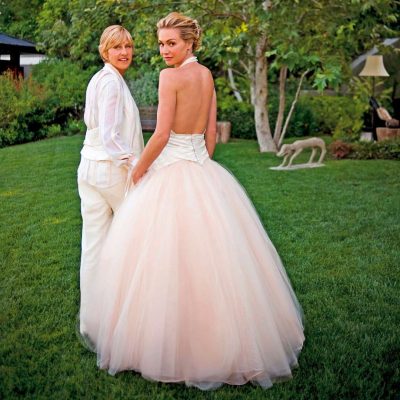
Even before legal recognition, queer weddings were not new. Photographs and accounts of historic LGBTQ+ weddings were often carefully hidden away to ensure the safety of the couples and those in attendance. The few surviving photos provide intriguing glimpses into how LGBTQ+ couples chose to dress on their special day. While heterosexual tradition dictated that women wear gowns and men wear tuxedos, but no such formal precedent existed for LGBTQ+ couples.
Queer couples…began to transform gender roles surrounding marriage to fit their unique needs… With each wedding, couples continue to personalize the traditionally heteronormative fashions of marriage.
Many LGBTQ+ couples did not conform to traditional gender roles. Surviving photos show some LGBTQ+ couples opting for conventional, gender-normative wedding garb, while others selected outfits that flouted tradition.
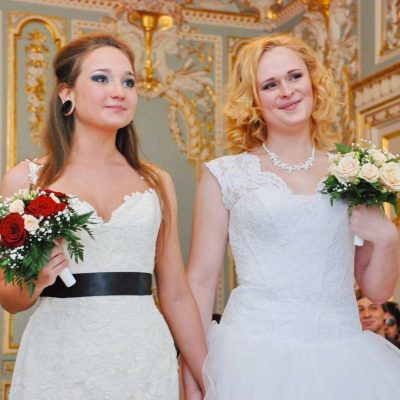
Queer couples — especially those composed of two women — began to transform gender roles surrounding marriage to fit their unique needs, with some women wearing tuxedos while others donned traditional wedding gowns. With each wedding, couples continue to personalize the traditionally heteronormative fashions of marriage.
What the Photos Tell Us
Images that depict historical LGBTQ+ weddings can be seen on the internet. Unfortunately, we are unable to show most of them because they can’t be verifiably sourced. As a result, we are only able to describe these photos here. In one photo (circa 1930) showing the marriage of two women, one of the participants wears a wedding gown while the other wears a man’s military uniform complete with a sword. In three photos (circa 1928) of two women in wedding attire, one woman wears a white dress while the other sports a man’s suit and top hat.
Overall, there is a sad deficit in our knowledge about what LGBTQ+ couples wore when celebrating their weddings in decades and centuries prior. However, the photos and accounts that have survived give us some insight into the traditions and fashions of same-sex marriage. The trend continues today as modern couples celebrate their hard-won freedom to openly participate in an institution which historically denied them access.
Want to learn more about the history of wedding fashions? Visit our exhibit I Thee Wed: Bridal Fashion from the Collection to see some of the Museum’s stunning wedding gowns and learn their stories.
Learning the Language
- Heteronormativity is the assumption that heterosexuality – attraction to the opposite sex – is “normal” and “natural.” It assumes people are heterosexual by default and can be used to construe homosexuality – attraction to the same sex – as “unnatural.”
- LGBT is an initialism of Lesbian, Gay, Bisexual, and Transgender. Sometimes a Q+ is added to include Queer and other sexual identities (LGBTQ+).
- Queer is an umbrella term used for those who do not identify as heterosexual and/or cisgender.
- Cisgender refers to a person who identifies with the gender they were assigned at birth.
- Transgender refers to a person who identifies with a gender different than the one assigned at birth.

